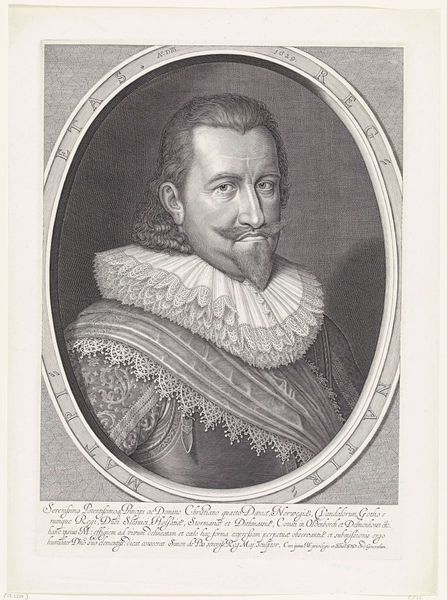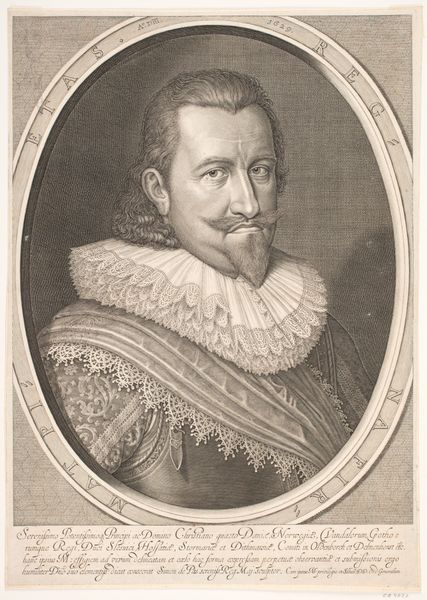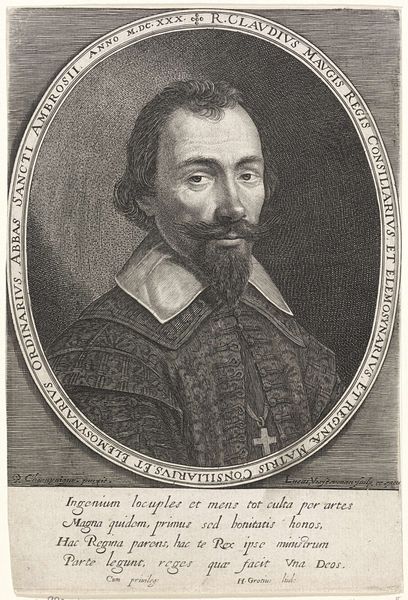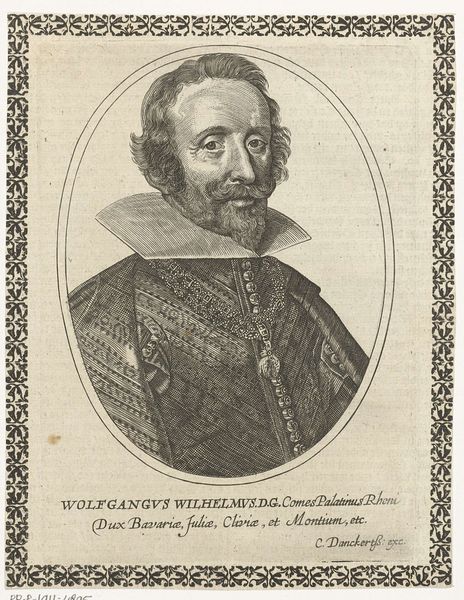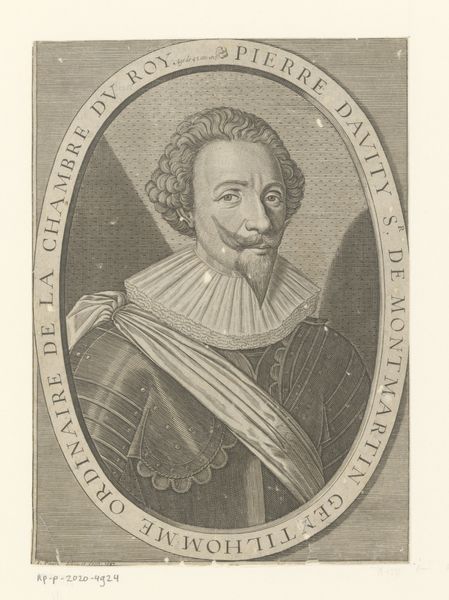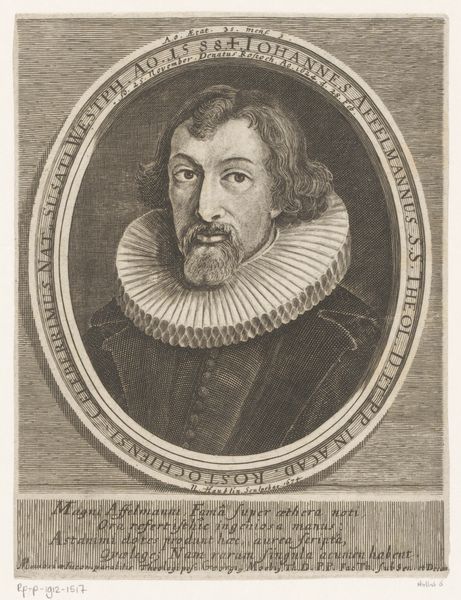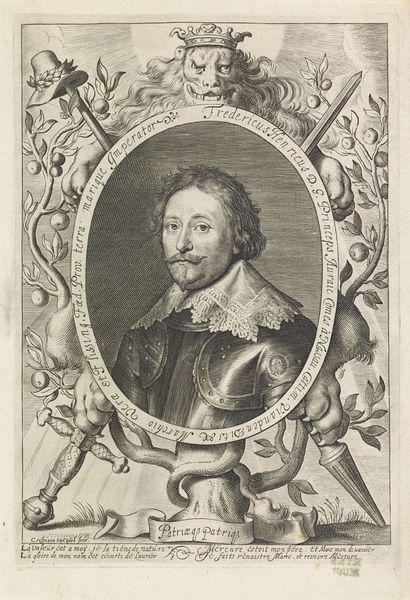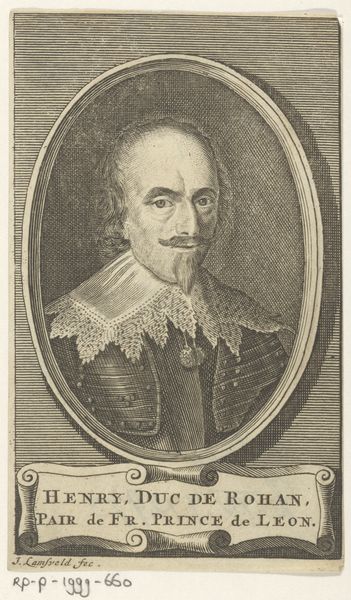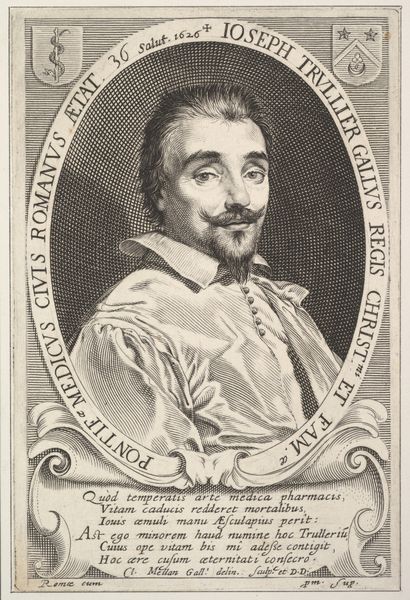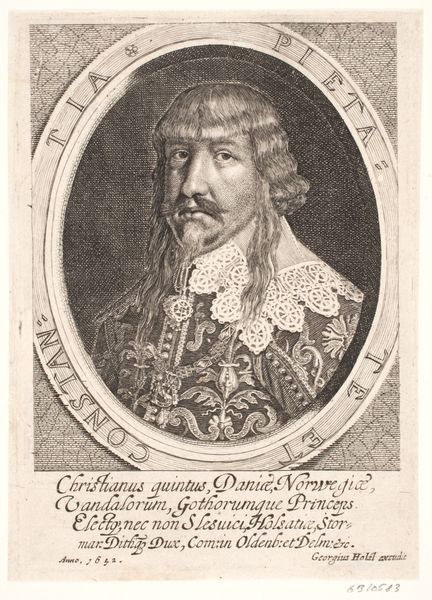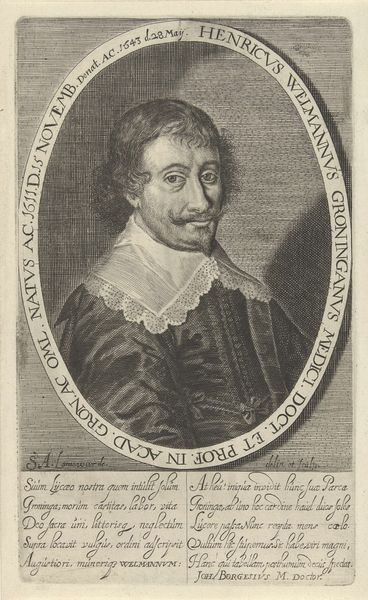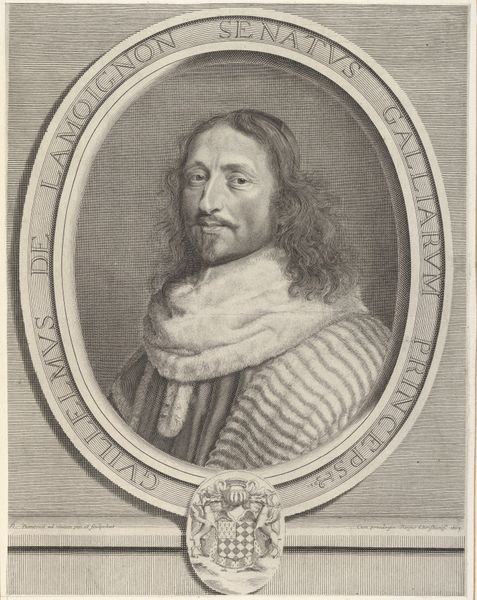
print, engraving
#
portrait
#
baroque
# print
#
history-painting
#
engraving
Dimensions: 301 mm (height) x 197 mm (width) (bladmaal)
Editor: Here we have an engraving, dating from sometime between 1629 and 1698, of Christian IV of Denmark, made by Simon de Pas. It has such a serious tone, with that elaborate collar framing his face. What symbolic meaning do you find in this portrait? Curator: Well, immediately I notice the text framing the image – "Pietas Regna," suggesting a kingdom ruled by piety. That sets the stage. Beyond a likeness, this engraving becomes a powerful assertion of legitimate rule during a time of significant upheaval in Europe. Do you notice how Christian IV is presented not merely as a man, but as an emblem? Editor: I do now! It’s like he’s more idea than person. How did the cultural memory of kingship inform an image like this? Curator: Think about it this way: portraits of rulers were less about individual personality and more about projecting the virtues associated with leadership – wisdom, strength, piety. The engraver is playing with these very established visual cues to communicate power. The armour speaks to military might, and that lace collar almost acts as a halo, linking to divinity and moral authority. How does this make you rethink portraits more generally? Editor: I hadn't considered how much messaging was packed into what I previously saw as a straightforward historical likeness. The image feels much more active and deliberate now. Curator: Precisely! By decoding these symbols, we begin to understand the deep connections between images, power, and cultural memory.
Comments
No comments
Be the first to comment and join the conversation on the ultimate creative platform.
